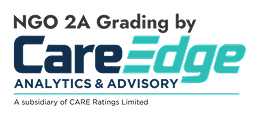OPEN HOUSE 2026 Click here

OPEN HOUSE 2026 Click here

ADMISSION ENQUIRY - 2026
Software Engineering
|
GANPAT UNIVERSITY |
|||||||||
|
FACULTY OF ENGINEERING & TECHNOLOGY |
|||||||||
|
Programme |
Bachelor of Technology |
Branch/Spec. |
Computer Science & Engineering (CBA/CS/BDA) |
||||||
|
Semester |
IV |
Version |
1.0.0.0 |
||||||
|
Effective from Academic Year |
2022-23 |
Effective for the batch Admitted in |
June 2021 |
||||||
|
Subject code |
2CSE411 |
Subject Name |
Software Engineering |
||||||
|
Teaching scheme |
Examination scheme (Marks) |
||||||||
|
(Per week) |
Lecture(DT) |
Practical(Lab.) |
Total |
CE |
SEE |
Total |
|||
|
L |
TU |
P |
TW |
||||||
|
Credit |
3 |
0 |
1 |
0 |
4 |
Theory |
40 |
60 |
100 |
|
Hours |
3 |
0 |
2 |
0 |
5 |
Practical |
30 |
20 |
50 |
|
Pre-requisites: |
|||||||||
|
Application Development, Database, fundamentals of programming languages |
|||||||||
|
Learning Outcome: |
|||||||||
|
After successful completion of this course, students will be able to:
|
|||||||||
|
Theory syllabus |
|||||||||
|
Unit |
Content |
Hrs |
|||||||
|
1 |
Software Engineering Fundamentals Introduction, SDLC life cycle, SDLC Models, Project Management |
5 |
|||||||
|
2 |
Agile Development Agility and Agile Process model, Extreme Programming, SCRUM development, Other process models of Agile Development and Tools. |
8 |
|||||||
|
3 |
Software Requirement Analysis and Design using UML Understanding the Requirement, Requirement Modeling, Requirement Specification (SRS), Requirement Analysis and Requirement Elicitation, Requirement Engineering, Feasibility Studies, Structural design, behavior design, functional design, UML Diagrams, Design Pattern |
14 |
|||||||
|
4 |
Software Architectural Design Data centered architecture, data flow architecture, call and return architecture, object oriented architecture and layered architecture, Wireframing |
4 |
|||||||
|
5 |
Source Code Management & Versioning Software configuration management, Software Configuration Items· SCM repository, SCM process, Version Control, Change Management |
4 |
|||||||
|
6 |
Manual and Automated Software Testing Software Quality Assurance Plan, Unit testing, integration testing, black box and white box testing, regression testing, performance testing, object-oriented testing, Automation testing. Verification and validation of Software. |
4 |
|||||||
|
7 |
Software Measurement Techniques Size and Cost Estimation: Function point analysis, LOC estimation, COCOMO. Software metrics, risk estimation, effort estimation |
6 |
|||||||
|
Practical content |
|
|
Practicals will be based on drafting Software Requirement Specifications, UML diagrams and software designs, UML diagrams, software change management and version control, Estimation of Test Coverage Metrics and Structural Complexity, software quality assurance through manual and automated testing approaches. |
|
|
Self - Study topics |
||||||||||||||||||||||||||||||||||||||||||||||||||||||||||||||||||
|
1. Software analysis for legacy systems |
||||||||||||||||||||||||||||||||||||||||||||||||||||||||||||||||||
|
2. Agile Methodology and its impact on project execution |
||||||||||||||||||||||||||||||||||||||||||||||||||||||||||||||||||
|
Mooc Course |
||||||||||||||||||||||||||||||||||||||||||||||||||||||||||||||||||
|
Course Name: Software Engineering |
||||||||||||||||||||||||||||||||||||||||||||||||||||||||||||||||||
|
Text Books |
||||||||||||||||||||||||||||||||||||||||||||||||||||||||||||||||||
|
1 |
Software Engineering By Sommerville, Pearson Education |
|||||||||||||||||||||||||||||||||||||||||||||||||||||||||||||||||
|
2 |
Software Engineering – A Practitioner’s Approach By: Roger S Pressman, McGraw-Hill |
|||||||||||||||||||||||||||||||||||||||||||||||||||||||||||||||||
|
3 |
Object - Oriented Modeling and Design With UML by James Rumbaugh |
|||||||||||||||||||||||||||||||||||||||||||||||||||||||||||||||||
|
Reference Books |
||||||||||||||||||||||||||||||||||||||||||||||||||||||||||||||||||
|
1 |
Pankaj Jalote, Software Engineering – A Precise Approach Wiley |
|||||||||||||||||||||||||||||||||||||||||||||||||||||||||||||||||
|
2 |
Software Engineering Fundamentals by Ali Behhforoz& Frederick Hudson OXFORD |
|||||||||||||||||||||||||||||||||||||||||||||||||||||||||||||||||
|
3 |
Rajib Mall, Fundamentals of software Engineering, Prentice Hall of India. |
|||||||||||||||||||||||||||||||||||||||||||||||||||||||||||||||||
|
4 |
Engineering Software as a Service An Agile Software Approach, Armando Fox and David Patterson |
|||||||||||||||||||||||||||||||||||||||||||||||||||||||||||||||||
|
5 |
John M Nicolas, Project Management for Business, Engineering and Technology, Elsevier |
|||||||||||||||||||||||||||||||||||||||||||||||||||||||||||||||||
|
Course Outcomes: |
||||||||||||||||||||||||||||||||||||||||||||||||||||||||||||||||||
|
COs |
Description |
|||||||||||||||||||||||||||||||||||||||||||||||||||||||||||||||||
|
CO1 |
Illustrate the key components of the Software Engineering field |
|||||||||||||||||||||||||||||||||||||||||||||||||||||||||||||||||
|
CO2 |
Analyze and apply best SDLC models as per business need |
|||||||||||||||||||||||||||||||||||||||||||||||||||||||||||||||||
|
CO3 |
Design appropriate system requirement specifications |
|||||||||||||||||||||||||||||||||||||||||||||||||||||||||||||||||
|
CO4 |
Design and implement appropriate solutions for testing software quality |
|||||||||||||||||||||||||||||||||||||||||||||||||||||||||||||||||
|
Mapping of CO and PO:
|
||||||||||||||||||||||||||||||||||||||||||||||||||||||||||||||||||






